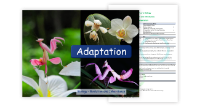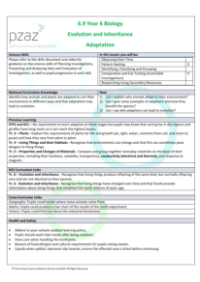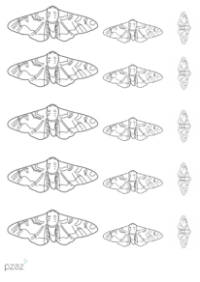Adaption - Self Assessment

Science Resource Description
Understanding animal adaptation is a key part of learning about evolution and the natural world. Adaptation refers to the process by which animals make changes over time in response to their environment to increase their chances of survival. This self-assessment checklist prompts students to consider whether they can explain the reasons behind these adaptations. It is important for students to articulate why animals need to adapt, such as to find food more efficiently, avoid predators, or cope with harsh climates. The ability to provide examples of specific adaptations, such as the thick fur of polar bears for insulation or the camouflaged skin of a chameleon, and explain how these adaptations confer benefits to the species, is also a crucial learning objective.
The checklist further encourages students to reflect on the connection between adaptation and evolution. Students should be able to discuss how successful adaptations can lead to evolutionary changes within a species over many generations. This is because individuals with beneficial adaptations are more likely to survive and reproduce, passing these advantageous traits on to their offspring. The self-assessment is designed to be reviewed by the teacher, who can provide feedback on the student's understanding. The goal is for students to have a comprehensive grasp of how adaptations help species to thrive and how these changes can accumulate over time, ultimately leading to the evolution of new species.







